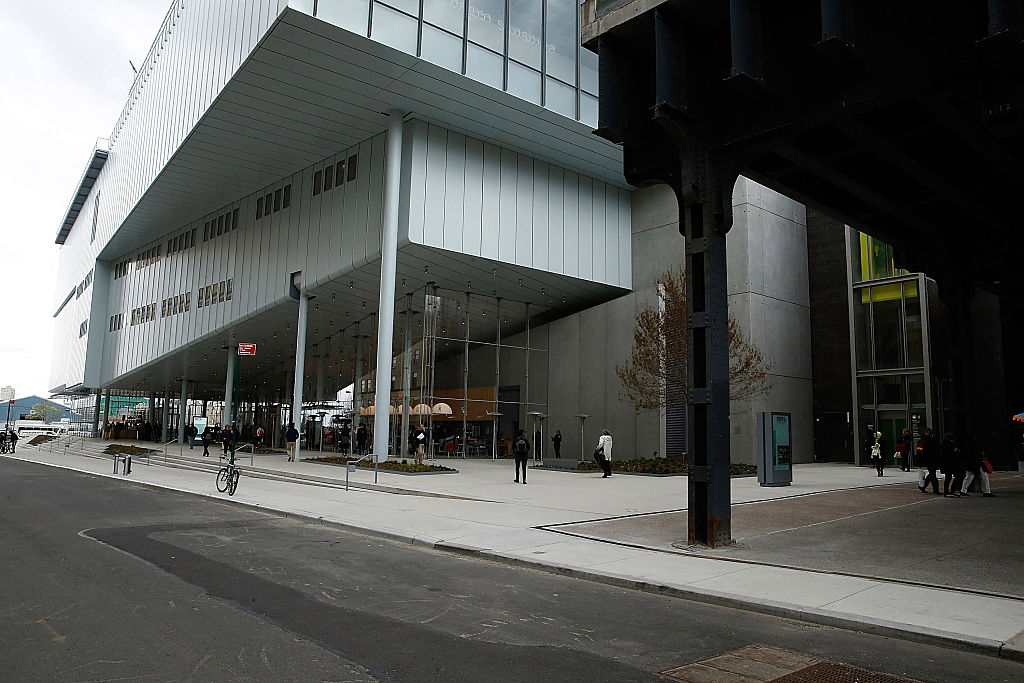More than 100 artists and scholars, including artists Emily Jacir, Hans Haacke, and Michael Rakowitz, have signed an open letter “in defense” of Dr. Sara Nadal-Melsió, the former associate director of the Whitney Museum of American Art’s Independent Study Program (ISP), whose position was eliminated in June following the cancellation of a pro-Palestine performance that was set to take place as part of the program.
“As much as to protest this unjust firing,” the letter reads, “we write to demand the reopening of the ISP.” (The cancellation of the work also coincided with the suspension of the ISP’s 2025-2026 program.)
Related Articles

Nadal-Melsió, a Catalan educator and curator, was appointed the first associate director in 2024, and became its nominal leader in February following the demotion of artist and writer Gregg Bordowitz to ISP director-at-large. (The circumstances of his demotion within the ISP are unclear.) Nadal-Melsió position was dismissed on June 2, after publishing a letter in protest of the cancellation of No Aesthetic Outside My Freedom: Mourning, Militancy, and Performance, by artists Fadl Fakhouri, Noel Maghathe, and Fargo Tbakhi, on May 12, two days before it was set to take place as part of the storied program.
“Nadal-Melsió was, and remains, unequivocally fit to run the program. Her dismissal is one act of patriarchal institutional violence among many, yet another symptom of the entangled violences that suffuse the present climate of suppression in the United States,” the July letter reads. Its signatories also reiterated a request from the Artists at Risk Connection (ARC) for the museum to “convene an independent investigation into the termination of the ISP’s Associate Director and its implications for academic and artistic freedoms at the museum.”
No Aesthetic, titled after a line in the poem “State of Siege,” by Palestinian writer Mahmoud Darwish, expressed within the context of the Palestinian liberation movement, “transnational political solidarity and examined entangled colonial, capitalist, and anti-Black violence,” according to its authors. For roughly an hour, performers were to interpret “scores” written by Natalie Diaz, Christina Sharpe, and Brandon Shimoda through physical and verbal gestures.
According to a statement posted to Instagram from Nadal-Melsió, No Aesthetics was cancelled on May 12 by the Whitney Museum after its leadership viewed a recording of its initial presentation at the Poetry Project, originally commissioned by leftist Jewish magazine Jewish Currents. In the video, a performer opened the show with a request that its attendees only remain in audience if they “love Palestinians wholly and completely,” and should leave if they “believe in Israel in any incarnation.”
In a statement shared with ARTnews in May, Whitney said that its decision to cancel the performance was “clear and necessary,” and not taken lightly.
“At the beginning of the performance, one of the artists called for anyone who believes in Israel or America in any incarnation to leave the audience. Later, the artist valorized specific acts of violence and imagery of violence,” the museum continued, adding that there was “no instance when we would find it acceptable to single out members of our community based on their belief system and ask them to leave an exhibition or performance.”
The cancellation of No Aesthetics was protested publicly by ISP curators Bea Ortega Botas, Kennedy Hollins Jones, Tamara Khasanova, and Ntshadi Mofokeng, as well as Nadal-Melsió, prior to her termination. The ISP’s three cohorts, curatorial, studio, and critical studies, also released statements on social media in support of the performance.
On May 22, Nadal-Melsió published her own protest letter, which states that the Whitney Independent Study Program “has always been unapologetically engaged with the politics of its times, citing the dissident actions of its cohorts amid moral global inflection points such as the Vietnam War, Kent State Massacre, and AIDS crisis: “Today, this means participants in the Program continue to think for themselves and provoke thought in others about contexts including but not limited to fascism at home and the relentless genocide being carried out in Gaza. And sadly today, this means that we also face unprecedented censorship and a threat to our foundational independence because of our pursuit of the very dialogue that makes the ISP what it is.”
Nadal-Melsió added that the introduction featured in the Poetry Project iteration was not planned for the ISP performance, and that Whitney director Scott Rothkopf, who reportedly delivered the news of its cancellation in a meeting, had not visited the show or responded to her requests to Whitney leadership to open a dialogue with the cohort. Nadal-Melsió was reportedly dismissed on June 2. In a statement to Artnet News, the museum confirmed that her position “will not be maintained.”
Since its inception in 1968 under Ron Clark, the Whitney Independent Study Program has seen hundreds of artists, curators and critics through its nine-month, non-degreed fellowship. The storied program consists of three separate programs: Fifteen applicants are chosen to participate in the Studio Program, four in the Curatorial Program, and six in the Critical Program, for a total of 25 per cohort. Its art star-studded alumni roster includes Naomi Beckwith, Emily Jacir, LaToya Ruby Frazier, Felix Gonzalez-Torres, Glenn Ligon, and Jenny Holzer. Over its history, the ISP had occupied various venues across New York City until 2023, when it settled in Roy Lichtenstein’s former Greenwich Village home and studio, a gift to the Whitney.
The censorship controversy around its current cohort has led to Pro-Palestine protests at the Whitney, as well as the withdrawal of some work by ISP artists featured in the ISP capstone exhibition at Westbeth Gallery in New York.
“It takes a lot of work and care to build a community, but only a moment of thoughtless violence to destroy, compromise, or instrumentalize it,” said Nadal-Melsió, as quoted by the signatories.
ARTnews has reached out to the Whitney Museum for comment; the story will be updated.

